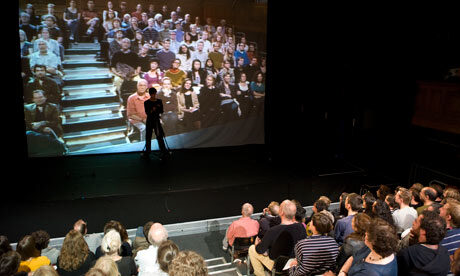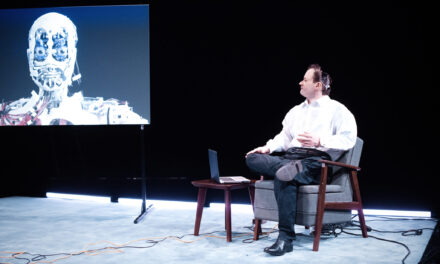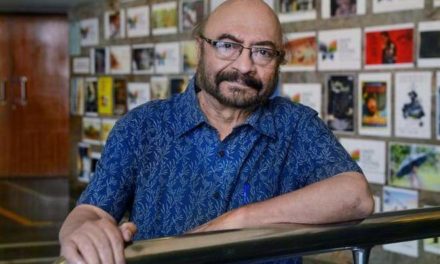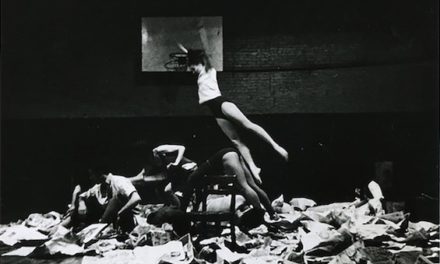This is the first of a series of blog posts that look at the role of the actor in a transmedia experience. We examine how the actor becomes a collaborator with the writer and audience in the development of a character and what this might mean for everyone.
Background
Transmedia storytelling is changing the way we create stories. From the beginning of time stories were brought to life through characters who become flesh and bone thanks to actors. For centuries, new acting techniques have been developed but their validity has not been proved within a transmedia scenario. That is, one in which the storyworld expands, gets deeper, branches and spreads across different formats and platforms. How does all this affect the work of the actor?
Elaborating a complex transmedia storyworld takes a lot of work to develop plots, locations, conflicts, mythologies, languages, internal rules…We get to know these elements through the characters of this universe. For live performances, it is important to define the role of the actor in the creation of this storyworld from the beginning.
Writer-Actor-Audience Collaboration
In a traditional theatre play, it is the writer who creates the character, and later on, the actor who takes possession of it. However, someone else wrote the lines she is saying. In a transmedia creation, boundaries are not that neat. The actor of this kind of experience starts from an existing text, but the importance of audience interaction and its degree of engagement can change the story on-the-go. The actor plays a more active role then, since from now on, she is going to be co-writer and co-creator of the character. In this fashion, this construction should be planned from a more collaborative perspective, in which the character gets nurtured and enriched not only by the writer but also by the actor’s contribution and maybe the audience.
Traditional Creative Workflow
Transmedia Creative Workflow
Character participation bible
To enable and make possible this co-creative process, we need a more dynamic character bible that establishes a set of guidelines for the actor. She must follow these rules and the character’s lines when the storytelling allows her to but must envision a more flexible point of view for non-predicted scenarios. The actor must get to know her character in depth and be capable of embodying it anytime, not to leave its destiny to random improvisation, but to set an active listening and fast response within the character’s parameters.
In the same way, the actor lends her body and face to the character, the decision about who will represent its virtual persona in social media has to be made from the beginning. Either the actor or the writer is responsible for that, it is obvious that we have an extraordinary necessity for a neatly maintained and updated character bible, in order to avoid inconsistencies and incoherencies.
This document, the product of the collaboration of writers and actors, will describe the best of both worlds regarding character construction. Writers will establish tone, background, and language, that is to say, how we perceive the character from the outside; while actors will establish objectives, deeper inner conflicts, and behavior construction, that is to say, how the character is inhabited from the inside. Both dimensions are valuable for character development and consistency across social media and live performances.
The character arc is ideally defined from the outset and should be complemented with a timeline that foresees any interaction between character and audience in any platform. It is vital to synchronize turning points and milestones within the character’s development among the different media it is using to communicate, so that its evolution through time and narrative is coherent.
Working within different narrative structures
Regardless of narrative structure, stories are always consumed in a linear way since the audience cannot experience them any other way (until there is time travel!).
Let us examine some narrative structures frequently used in transmedia storytelling:
1. Branching narratives.
These stories offer different versions or branches of the story according to decisions made by their characters. Those decisions can be or not influenced by audience interaction. In these narratives, the actor explores different alternative events according to different possibilities. These stories are very enriching for the character but the actor has to be all the time fully aware of the branch she is inhabiting and she has to explore different character’s arcs according to the chosen alternative, which is why improvisation alone (without knowledge of the character timeline) is not recommended for these narratives.
2. Interactive linear narratives
These are stories that do not branch but offer opportunities for interaction with the audience – either to test their opinion or to engage them with game mechanics. However, audience decisions do not alter the narrative timeline. In these structures, actors may include some references to the audience interaction within the established narrative but never abandon the sole narrative timeline. This allows for improvisation that creates the illusion of a branching narrative.
3. Open storyworlds
These stories are those in which the audience journey is determined by the audience. In these narratives, content is layered across different platforms and how the audience navigates from one to another is related directly to their decisions and their engagement. Content is interconnected in a sort of neural network, so there is no traditional setup-conflict-resolution scheme. These pieces are individual stills, singular frozen scenes across different platforms of the same moment in time.
In these stories, actors must be open to a character whose development is not determined by a pre-scripted narrative flow, but by the unique audience journey through the storyworld. Since entrypoints to the storyworld can be anywhere, the actor has to work in each scene/audience interaction as a self-contained unit, independent from other scenes/interactions – leaving the audience to “connect the dots.” In this type of acting, the actor explores the “here and now” of the character, and not how this is inserted within a broader arc of construction.
Narrative Timeline for Actors in an Open Storyworld
Alternative Audience Journeys through an Open Storyworld
This article was originally published on Transmedia Storyteller. Reposted with permission. Read the original article.
This post was written by the author in their personal capacity.The opinions expressed in this article are the author’s own and do not reflect the view of The Theatre Times, their staff or collaborators.
This post was written by Belén Santa-Olalla.
The views expressed here belong to the author and do not necessarily reflect our views and opinions.

























